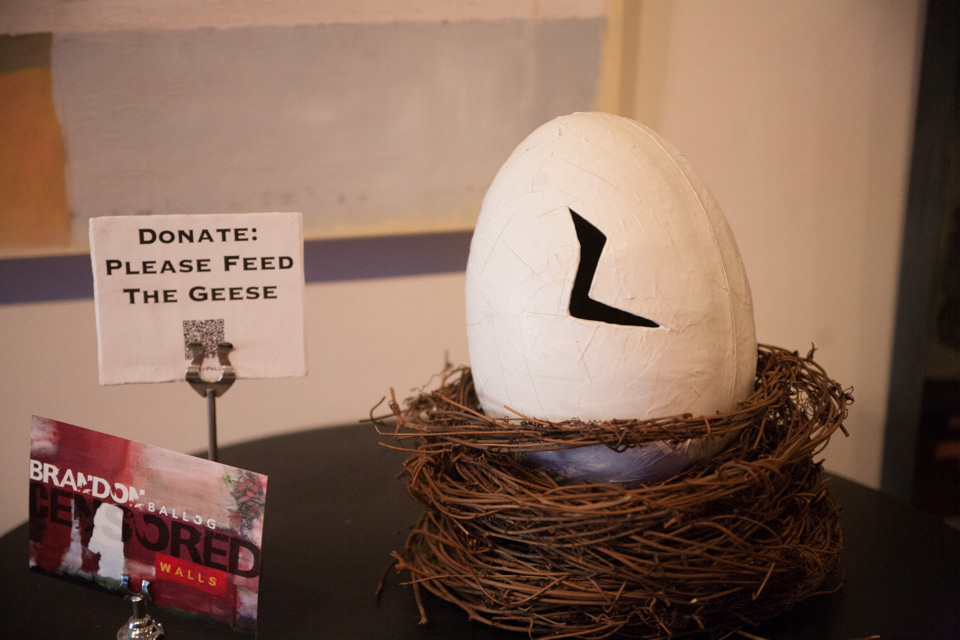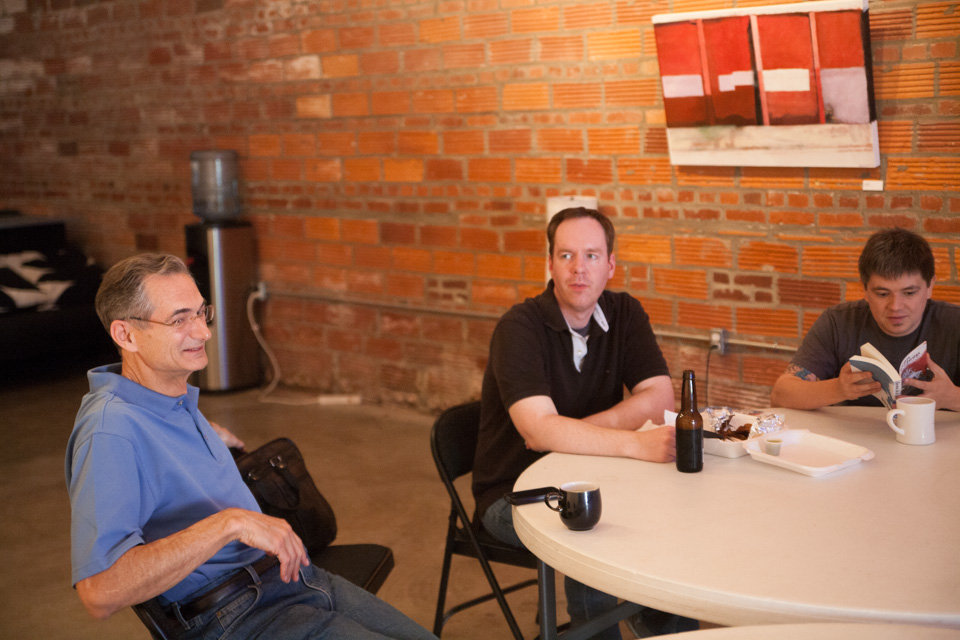Last week I returned from a looping drive through northern Ohio and Michigan to meet with guys who fought with my old Vietnam artillery battery.
The flag under which they served has not changed since 1950 with the addition of its final star. It flies today forever young over communities across America. The veterans I met last week, unlike their flag, have aged and bear the marks of service to the country.
Tom Townley of Paulding, Ohio, a tall beanstalk in Vietnam, today carries another hundred pounds and walks bent over with a high tech cane. He was the battery medic. In a soft voice he tells me of the things he saw that still haunt him. He shows me the small scar on his shin that, he laughs, should never have earned him a Purple Heart. “I told them I didn’t deserve it compared to the guys with serious injuries. But the brass insisted.”
Driving north into Michigan on my way to Niles, I pass immaculate barns and fields sprouting perfect rows of young crops. The little towns along the way sell farm equipment and gas and lumber. They are in my rearview mirror before I can read the signs.
The driveway into Mike Lauricella’s property is easy to find because there is an old motorcycle wheel mounted above his mailbox. Mike closed down his cycle business several years ago but still has the workshop.
Jim Vipond, a Vietnam buddy, made the long drive down from Kalkaska to meet me at Mike’s place.
The three of us sit on folding chairs in the middle of the motorcycle workshop, where Mike has set up the slide projector he bought in Vietnam. Jim sits quietly while Mike talks and cranks through a sampling of the 700 slides he brought back from Vietnam. The projector rattles and complains like a typical old veteran. Once it topples off the table, but returns to duty on the table as if it were built to be kicked around. Mike shows pictures of gun crews and remembers most of the names. He narrates pictures of heliborne operations with the infantry, tanks operating around LZ Sherry, and shots of the firebase taken from helicopters showing hooches and gun emplacements.
Mike says, “I took all these pictures before I went into the hospital. But after I woke up and got out of the hospital I didn’t take any more pictures, I did not write a single letter, and I cannot remember anything.” Today he has no memory of what put him in the hospital or of anything that happened afterward.
While Mike was in the hospital the Army sent his possessions to his folks, telling them he was missing in action. “It was 11:00 at night when they went up to the door and told them.” Mike leads us over to his house and hauls out the contents of the box. He shows me official orders, picture albums, patches and service ribbons. “Most of this stuff I don’t remember and I don’t know what half of it means.”
I turn to Jim Vipond, realizing he will let Mike talk all afternoon. He says, “I was so sick of sitting at LZ Sherry and getting mortared and so many guys wounded that I volunteered to go out with the infantry. It was worse. I saw a lot of guys hurt. The Medivac chopper would not get anywhere near the ground, so we tied the wounded to slings and they hung beneath the chopper and got shot at some more as they swung in the air.”
Malaria took Jim out of the field and into the hospital and then back to LZ Sherry, where he refused to go back on a gun crew. “I wasn’t going to stand out in the open anymore with the mortars coming in.”
Jim spends much of his time today wringing treatment from the VA to manage his medications and deal with the emotions still raw from Vietnam.
Another veteran from my battery, Jim Sprout, drives to Mike’s place from Lancaster, Pennsylvania to meet with me while I’m there. Mike gets out the slides and after awhile Jim says he can’t take it anymore and has to go home. Nothing could convince him to stay. I never saw Jim and feel I owe him a call.
I am due in Kalamazoo that evening and it’s a two hour drive so I am antsy to leave. Mike pulls me back into the workshop to a table with all of his slides, half in carousels and the other half in bundles with rubber bands around them. Written neatly on the edge of each slide are the names of the people in the picture and the location. Mike insists on giving all of them to me and says, “Maybe you can figure out the gaps.”
I shake hands with Colonel John Munnelly at his front door and we figure out that we met at the last regimental reunion but never talked. Connie, his wife of 60 years, remembers me and goes off to prepare dinner. Their son William is on the couch and we talk jeeps, a subject on which he is an expert.
The colonel and I retreat to his office on the lower level. He pulls out the field maps he used in Vietnam. Unfolded they cover half his desk. At 84 he can still point out the locations of artillery bases and the intersection where two men from my battery died when an artillery round exploded right out of the barrel. “It was either a bad fuse, or the gun was too low and the round hit a bunker. We never knew.”
Colonel Munnelly took over the battalion when it was new in Vietnam. He found a poorly led group of men with low morale. “When I came in I asked the battalion commander I was replacing what was his biggest problem. And do you know what he told me? … Not enough ice! Can you believe that? That was his biggest problem! And he was the battalion commander. Unbelievable!”
Munnelly was already a seasoned combat veteran when he arrived in Vietnam. He was a platoon sergeant in the early days of the Korean War, when the North Koreans were beating the Americans at every turn and on the verge of driving them off the peninsula. Munnelly won a battle field commission to second lieutenant and was awarded seven battle medals during his tour.
In Vietnam he knew what needed doing to shape up the battalion, and it had nothing to do with ice. The men were in stateside uniforms and boots, and these were near rags. He got them jungle gear, along with regular supplies of food and equipment. He issued orders about adequate sandbag protection and perimeter defense. Most of all he lived among his troops. “People used to ask me were my headquarters was. I would tell them its where I drop my helmet at night.” He pauses for a moment and says, “I’m proud of that.”
I am packing up my notes to leave when he says, “Follow me, I want to show you something.” He leads me to a small, unfinished corner of the basement where his maps of Korea are hung on the concrete wall. His finger starts at the top of the map and traces the route he led his platoon as they fought off the North Koreans. “It was 30 degrees below zero up near Pyongyang. We had to strap our C rations to the truck radiators to thaw them out. And the North Koreans were beating us because we had no strategy under MacArthur; we were all over the place and getting beat. That was before Ridgway took over and we took a stand at the 38th parallel. I’m not saying Vietnam was easy, but compared to Korea …..”
I am back on the major highways of Michigan, and wondering why they have a speed limit at all in that state. I am the slowpoke at 75 mph. Trucks blow by me as if I am an insult to the road. I pull into Brighton midmorning, alive, to see Andy Kach. He has a military flag planted beside his driveway to welcome veterans to his home.
Andy is a certified repairman for the Lionel Train company. His basement is every boy’s dream, and the fantasy of every boy hidden inside every man. There is a train board with three concentric tracks, each of them with a train and controlled by a bank of transformers. Two walls contain old trains of such variety that they have the power to recall thousands of childhoods. A workbench stretches an entire wall, every tool in its place.
Andy’s memory of Vietnam is as precise as his grasp of the inner workings of a Lionel locomotive. He tells me of the morning he dragged 13 enemy bodies out of the wire after a ground attack the night before. “It was the tank on our perimeter that saved us. We were shooting a fire mission in the other direction when the tank saw them coming and blew them away with canister rounds. If it wasn’t for that tank I don’t know that I would be alive. The next morning I’m on the detail to pull out the bodies and they bring lunch out to us. I sit down to eat and look down and there’s a leg.”
I ask him about the bloody summer of 1969. “We were down to 64 guys, from 114. I got blown out of the guard tower. Took shrapnel in the back but the fall messed up my jaw. If you could still fire a weapon you did not go to the rear. So four days later my face is so swollen I can’t eat and I’m leaking from my ear, so I finally get to go to the rear.”
I ask him about the conversation he had at the last reunion with his old battery commander. “Yea, I was kidding Parker about not sending me to the rear and he says he didn’t know I was hurt that bad. So I ask him if he had known would he have sent me earlier. He says, ‘Probably not.’ And he laughs.”
Andy’s experiences of war were as brutal as anyone, yet they seem not to have scared him as deeply as other veterans. I ask him about Sergeant Farrell’s pet monkey. “Everybody hated that monkey. I am laying on my bunk with my face all swollen and this monkey is above me, I didn’t know it was there, and it pisses all over me.”
I say, “I hear someone hung the monkey.”
Andy says, “Nobody hung the monkey, even though people thought I did it. The monkey hung itself.”
“Suicide?”
“During a mortar attack the monkey was in its cage with its leach on. It went berserk and afterward we found it swinging from the roof of the cage. Nobody was sad, but Farrell maybe.”
As I listen to Andy and take notes, I see a flag on his desk, folded in the proper military triangle. Andy serves regularly as a military honor guard at the funerals of veterans. He attends in full dress uniform to escort the casket, draped in the flag, and to fold the flag according to the prescribed ritual befitting a sacred symbol.
He does honor to the flag and to all of us who have served under it.

—
In honor of Flag Day, Ed’s book Seven in a Jeep is available for Kindle at a reduced price of only $2.99. Find it on Amazon here.



